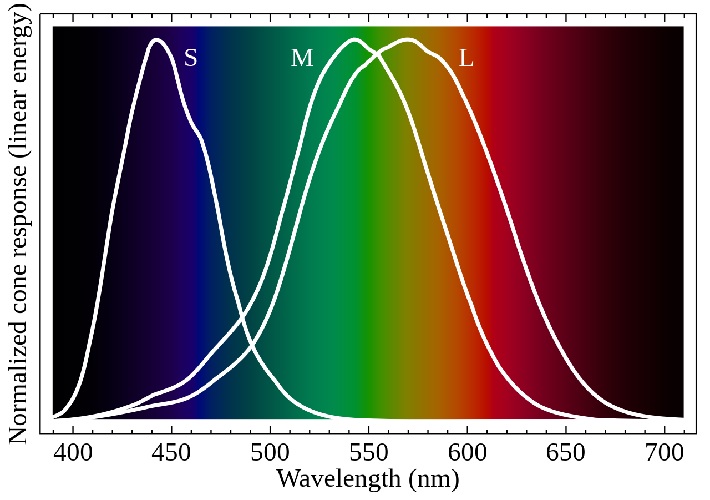Color Vision - WIP
The Three Cones
There are two main types of cells in the human eye that respond to light: rods and cones. Rods are primarily used in night vision and have little sensitivity to color. Cones on the other hand are very sensitive to color and function best in daylight.
There are three kinds of cones: Short, Medium, and Long, not named for their size, but the length of the light wavelengths each is most sensitive to. Contrary to popular belief these are not Red, Green, and Blue cones, nor are those three colors the only colors the human eye can see. We can see the other wavelengths too, they are not just mixtures. While these cones do peak at three different wavelengths, their ranges are wide and overlap each other.

While Small cone cells peak at blue and Medium cone cells peak at green, Long cone cells do not peak at red, but instead yellow
Trichromacy and Opponent Process Color Theory
Normal human color vision is called trichromacy because of the three different color sensitive cones, although our eyes do not necessarily read individual colors like how RGB displays mix colors.